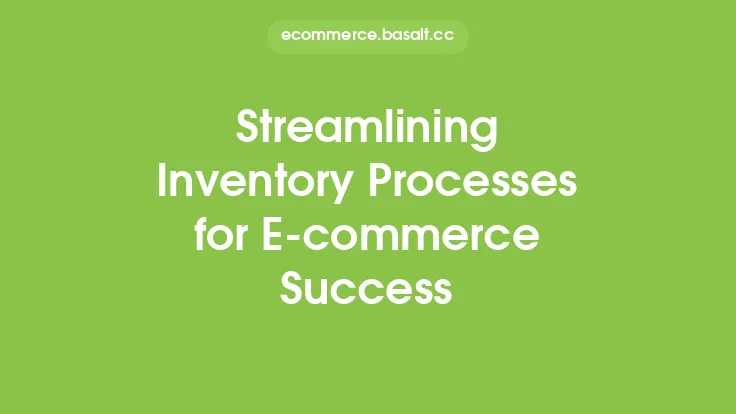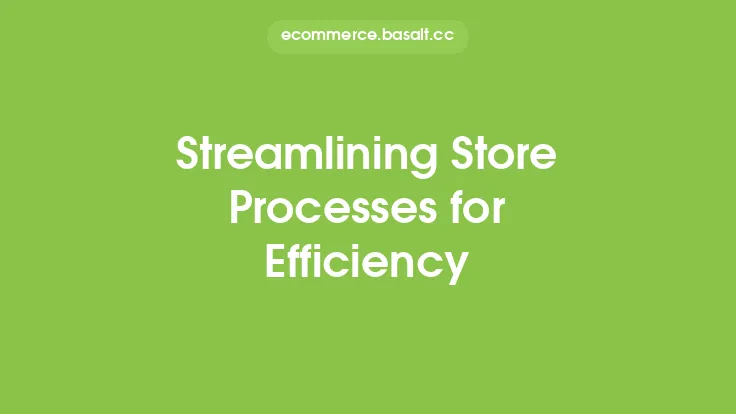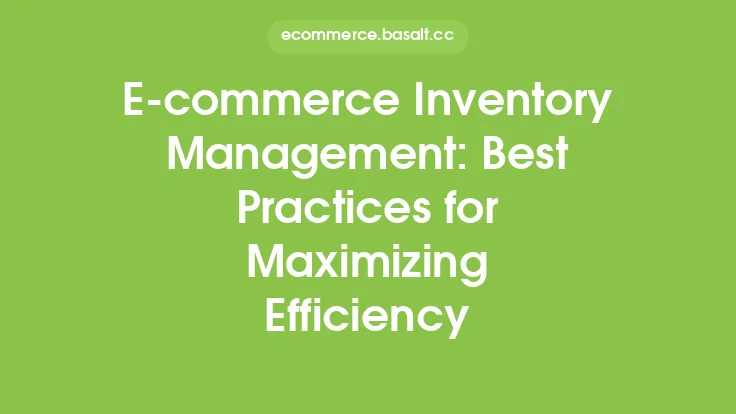The world of e-commerce has experienced tremendous growth over the past decade, with more and more businesses shifting their focus towards online sales. As the industry continues to evolve, it's becoming increasingly important for e-commerce businesses to streamline their processes and improve efficiency. One way to achieve this is through e-commerce automation. By automating various tasks and processes, businesses can reduce manual labor, increase productivity, and provide a better overall customer experience.
What is E-commerce Automation?
E-commerce automation refers to the use of technology to automate various tasks and processes within an e-commerce business. This can include everything from inventory management and order fulfillment to customer service and marketing. By automating these tasks, businesses can free up more time and resources to focus on growth and development. E-commerce automation can be achieved through a variety of tools and software, including workflow automation platforms, marketing automation software, and inventory management systems.
Benefits of E-commerce Automation
The benefits of e-commerce automation are numerous. For one, it can help businesses save time and reduce labor costs. By automating tasks such as order processing and inventory management, businesses can reduce the need for manual labor and minimize the risk of human error. E-commerce automation can also help improve customer satisfaction by providing faster and more accurate order fulfillment. Additionally, automation can help businesses scale more efficiently, as they can handle increased traffic and sales without having to hire additional staff.
Types of E-commerce Automation
There are several types of e-commerce automation, each with its own unique benefits and applications. Some of the most common types of e-commerce automation include:
- Inventory management automation: This type of automation helps businesses manage their inventory levels, track stock, and automatically reorder products when they reach a certain threshold.
- Order fulfillment automation: This type of automation helps businesses streamline their order fulfillment process, from processing orders to shipping products.
- Customer service automation: This type of automation helps businesses provide better customer service by automating tasks such as responding to customer inquiries and resolving issues.
- Marketing automation: This type of automation helps businesses automate their marketing efforts, including email marketing, social media marketing, and advertising.
Implementing E-commerce Automation
Implementing e-commerce automation can be a complex process, but there are several steps businesses can take to get started. The first step is to identify areas of the business that can be automated. This can include tasks such as inventory management, order fulfillment, and customer service. Once these areas have been identified, businesses can begin researching and selecting the right automation tools and software. It's also important to develop a plan for implementing automation, including training staff and testing systems.
Common E-commerce Automation Tools
There are many different e-commerce automation tools and software available, each with its own unique features and benefits. Some of the most common e-commerce automation tools include:
- Workflow automation platforms: These platforms help businesses automate tasks and processes by creating custom workflows and integrating with other systems.
- Marketing automation software: This software helps businesses automate their marketing efforts, including email marketing, social media marketing, and advertising.
- Inventory management systems: These systems help businesses manage their inventory levels, track stock, and automatically reorder products when they reach a certain threshold.
- Customer service software: This software helps businesses provide better customer service by automating tasks such as responding to customer inquiries and resolving issues.
Best Practices for E-commerce Automation
To get the most out of e-commerce automation, businesses should follow several best practices. The first is to start small and automate one task or process at a time. This can help businesses test and refine their automation systems before scaling up. It's also important to monitor and analyze automation systems regularly, to ensure they are working efficiently and effectively. Additionally, businesses should prioritize transparency and communication with customers, to ensure they are aware of any changes or issues related to automation.
Overcoming Common Challenges
While e-commerce automation can offer many benefits, it's not without its challenges. One of the most common challenges is integrating automation systems with existing systems and processes. This can require significant time and resources, and may require businesses to invest in new software or hardware. Another challenge is ensuring that automation systems are working efficiently and effectively, and that they are not causing any unintended consequences. To overcome these challenges, businesses should prioritize careful planning and testing, and should be prepared to make adjustments as needed.
Future of E-commerce Automation
The future of e-commerce automation is exciting and rapidly evolving. As technology continues to advance, we can expect to see even more sophisticated and integrated automation systems. One area that is likely to see significant growth is artificial intelligence, which can be used to automate tasks such as customer service and marketing. Additionally, the use of automation in areas such as supply chain management and logistics is likely to become more prevalent. As e-commerce businesses continue to adopt and integrate automation systems, we can expect to see significant improvements in efficiency, productivity, and customer satisfaction.
Conclusion
E-commerce automation is a powerful tool that can help businesses streamline their processes, improve efficiency, and provide a better overall customer experience. By automating tasks such as inventory management, order fulfillment, and customer service, businesses can reduce manual labor, increase productivity, and scale more efficiently. As the e-commerce industry continues to evolve, it's likely that automation will play an increasingly important role. By understanding the benefits and types of e-commerce automation, and by following best practices for implementation and management, businesses can stay ahead of the curve and achieve success in the competitive world of e-commerce.





